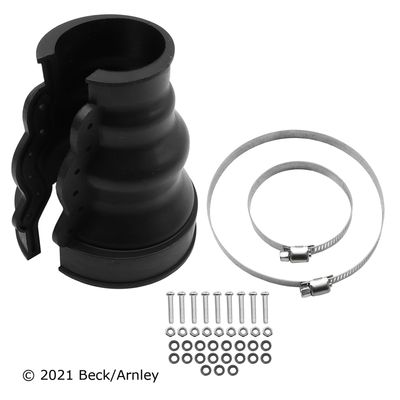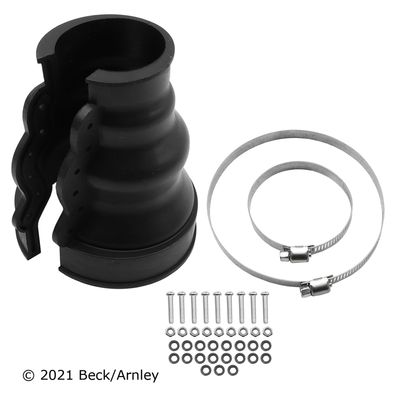Answer
Aug 21, 2024 - 04:02 PM
Inspecting your CV boot, particularly when considering using the GM Genuine Parts 19256071 kit, involves carefully examining the condition of the existing boot and determining whether it needs replacement. Here’s a step-by-step guide on how to inspect your CV boot:
1. Preparation- Safety First: Park your vehicle on a flat, stable surface and engage the parking brake. Use wheel chocks on the wheels that will remain on the ground.
- Lift the Vehicle: Use a jack to lift the vehicle and secure it with jack stands. Ensure the vehicle is stable before you start working.
- Remove the Wheel: Use a lug wrench to remove the wheel, which will give you clear access to the CV boot and axle.
- Check for Cracks or Tears: Look closely at the CV boot for any visible cracks, tears, or holes. Even small cracks can allow dirt and moisture to enter, which can lead to CV joint damage.
- Look for Grease Leaks: Inspect the area around the boot for signs of grease leakage. A leaking boot will often fling grease around the wheel well and suspension components. If you see grease, the boot is likely damaged and needs replacement.
- Examine the Boot Condition: Assess the overall condition of the boot. If it appears dry, brittle, or is showing signs of aging (such as hardening or cracking), it’s a sign that the boot may fail soon.
- Feel for Flexibility: Gently squeeze and flex the CV boot with your hands. It should be flexible and pliable. If it feels stiff or brittle, it's likely that the rubber has deteriorated, and the boot may need replacement.
- Check for Loose Clamps: Inspect the metal clamps that secure the boot to the axle. Make sure they are tight and not loose or missing. Loose clamps can cause the boot to slip or leak grease.
- Turn the Steering Wheel: With the wheel off and the vehicle lifted, turn the steering wheel fully to the left and then to the right. This stretches the CV boot, making any potential damage more visible.
- Rotate the Axle: Manually rotate the axle shaft to inspect the entire circumference of the boot. Look for any abnormalities or signs of wear that may not have been visible during the initial inspection.
- Listen for Noise: While rotating the axle, listen for any clicking, popping, or grinding noises. These sounds may indicate that the CV joint itself is already damaged due to a compromised boot.
- Check for Play: Gently move the CV joint back and forth to check for excessive play. Some movement is normal, but too much play can indicate that the joint is worn and may need to be replaced along with the boot.
- Signs of Damage: If you find any cracks, tears, or grease leaks, or if the boot is stiff or brittle, it’s time to replace it using the GM Genuine Parts 19256071 kit.
- Minor Issues: If the boot shows only minor wear with no visible damage or leaks, it may still be functional but should be monitored regularly for any signs of deterioration.
- Gather Tools: If you determine that the boot needs replacement, gather the necessary tools and the GM Genuine Parts 19256071 kit.
- Clean the Area: Before installing the new boot, clean the CV joint and surrounding area to remove any old grease, dirt, or debris.
- Install the New Boot: Carefully follow the instructions included with the GM Genuine Parts kit to install the new boot, ensuring it is properly seated and secured with the new clamps provided.
Inspecting your CV boot is a crucial step in maintaining your vehicle's drivetrain health. By carefully examining the boot for signs of wear, cracks, or leaks, you can determine whether it needs to be replaced using the GM Genuine Parts 19256071 kit. Regular inspection can help prevent more severe damage to the CV joint and ensure the longevity of your vehicle's components. If you find any significant issues during your inspection, it’s best to replace the boot promptly to avoid further complications.





Add New Comment